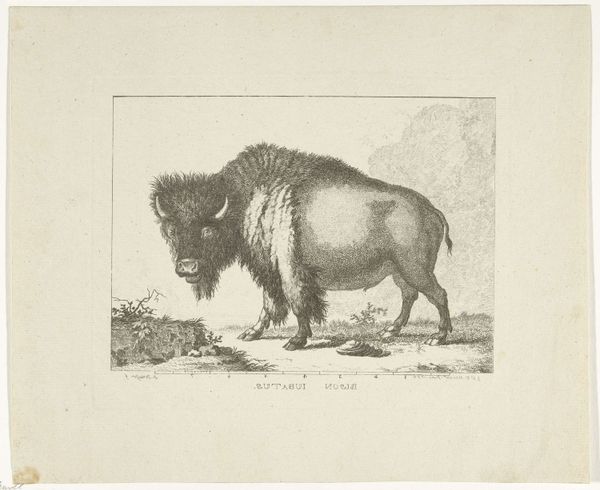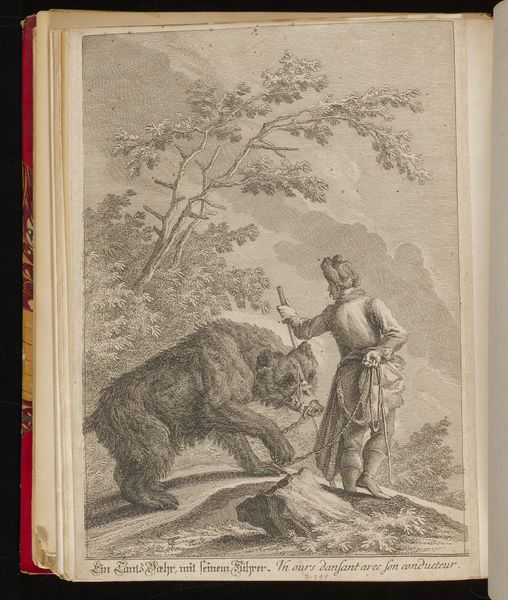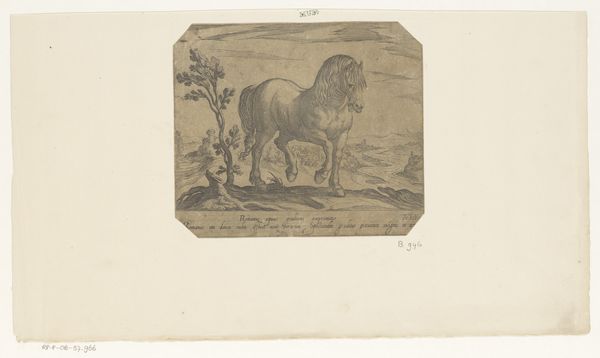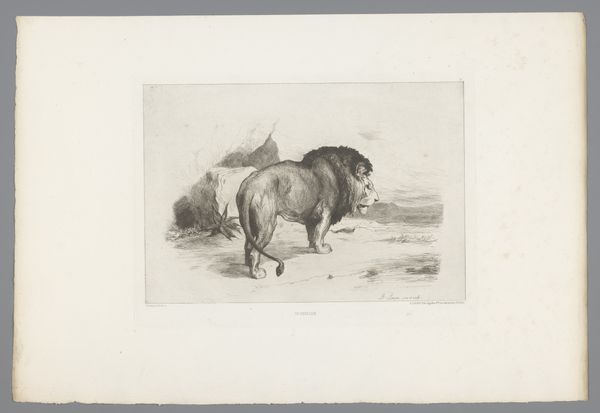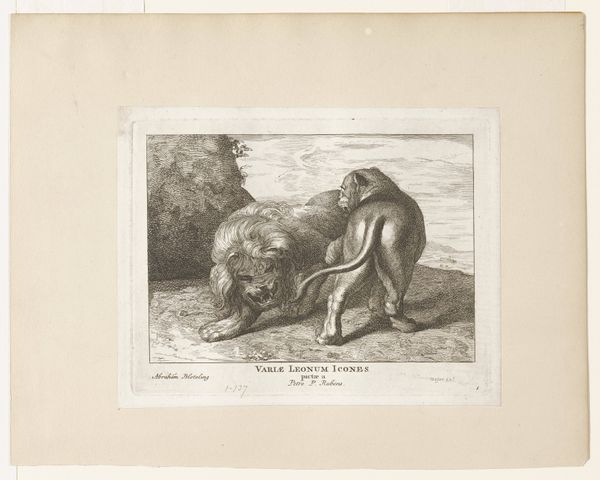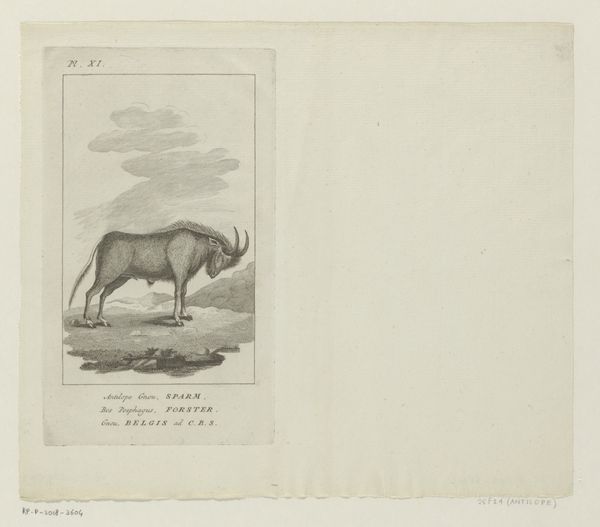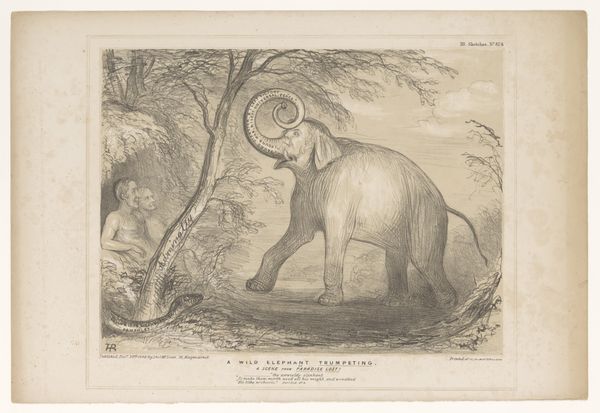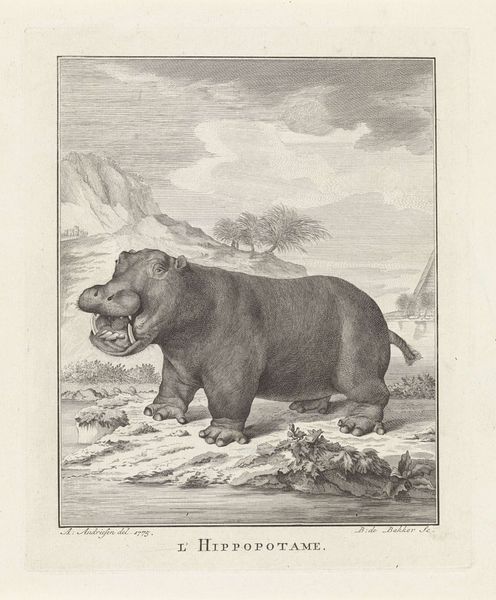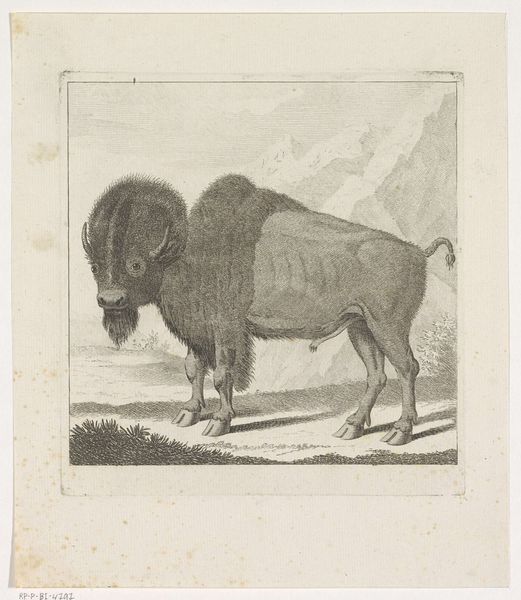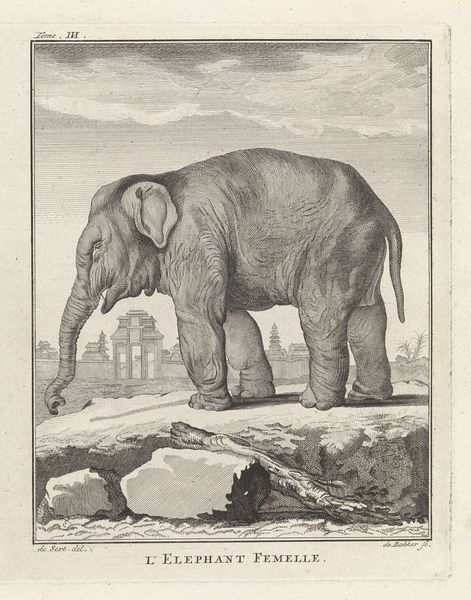
drawing, print, engraving
#
drawing
#
animal
# print
#
landscape
#
15_18th-century
#
engraving
#
realism
Dimensions: height 265 mm, width 354 mm
Copyright: Rijks Museum: Open Domain
This engraving of an American bison was made by Johann Rudolph Holzhalb, an 18th-century Swiss artist and engraver. The image is steeped in the history of European encounters with the Americas, part of a long tradition of representing the “new world” and its inhabitants. It reflects the scientific curiosity of the Enlightenment, but it also echoes the colonial gaze that often exoticized and othered non-European people and places. Consider the bison itself: an animal central to the lives and cultures of many Indigenous communities, here rendered as a specimen for European study. The engraving strips away the bison’s cultural significance, reducing it to a mere object of scientific inquiry. This act of erasure is symbolic of the broader colonial project, which sought to dominate both the land and the narratives of its native peoples. What untold stories lie behind this image, silenced by the march of colonialism?
Comments
No comments
Be the first to comment and join the conversation on the ultimate creative platform.

